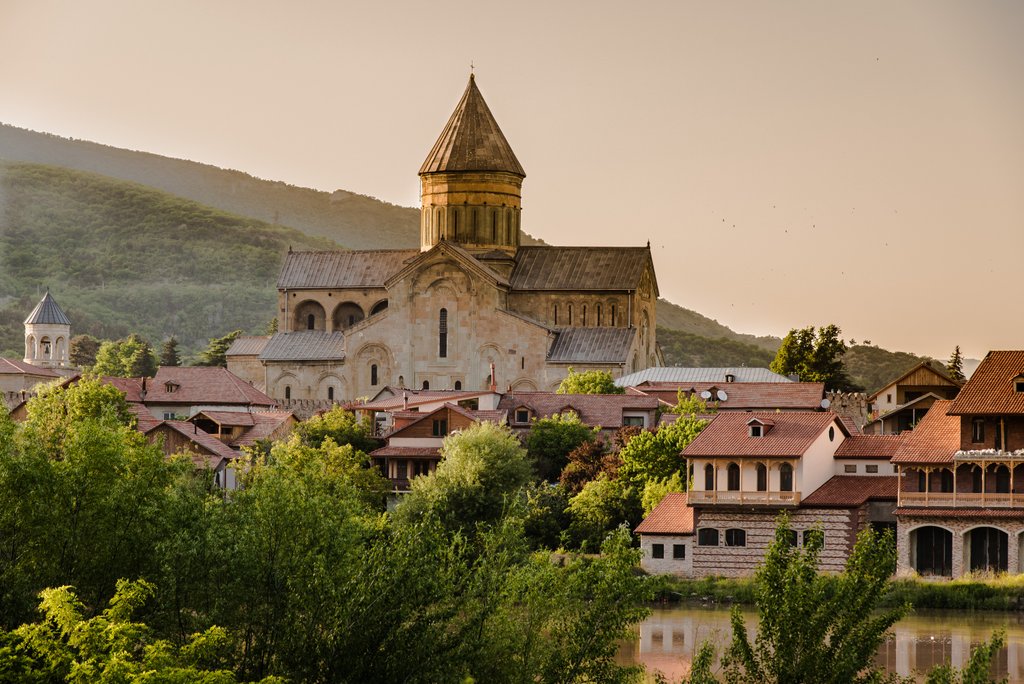(bertwillaert.com) Every year again thousands of Eurasian Sparrowhawks fly over the western Lesser Caucasus along the Black Sea coast on their way to Africa. Yearly, for over 2000 years, georgian ‘bazieri’ are waiting for them, equiped with nothing more than a net and a trained songbird. These falconers have developed an effective manner to get the sparrowhawks into their nets, after which they tame them to hunt for quails and use them in falconry competions. This ancient tradition is however associated with illegal hunting practices, a deadly threat for many of the large numbers (yearly over 800 000) of migratory raptors.
When hiking trough the beautiful hills
of the Lesser Caucasus during September or October, one could encounter a
georgian falconer – locally called bazieri -, patiently
waiting for migrating Eurasian sparrowhawks. And when they are flying
over, you could see him trying to get these birds into his
strategically placed nets. Upon seeing this for the first time, I
directly questionned myself how the bazieri would succeed in catching one of these shy birds.
When the birds are well trained, the bazieri
sets up his trap. This is done by clearing a small spot on a hill
slope, with a clear view to the north. The removed ferns or other plants
are then used to build a screen, next to which the net is placed. Now
the only thing left is waiting… When a bird is approaching, the bazieri hides behind his fern screen and throws up the shrike, sometimes making a wistling sound, to attract the bird’s attention.
When the bird is interested, it will hold for a fraction of a moment and then start it’s dizzeling hunting stoop. Only if the bird is within meters from the net, the bazieri will withdraw the shrike.When successful, the raptor
now flies into the net, causing it to collapse because of the bird’s
impact. The bazieri now needs to get his hands on the bird as fast as
possible, as it might still escape. After being caught, the
bird’s wings are tied to its body using a piece of cloth and it is laid
down in the shadow. On good days, this process can be repeated up to 30
times! At home the bazieri will attach straps and start training the birds to use them for quail hunting of falconry competitions.
Problems associated with falconry
It is astonishing to see how an acient
traditional method is still one of the best techniques to catch the
raptors. The falconry history is interesting and diserves some
attention. Unluckily there are also some conservation issues associated
with this tradition.
First of all, some falconers do not always release their birds at the end of the falconry season. Birds
are often sold, especially when they have an abberant color pattern.
Secondly, not only Eurasian sparrowhawks are caught. Levant’s
sparrowhawks, are less suitable to use in falconry, but often
caught being hard to distinguish from the Eurasian one from a distance
without binoculars. Not all bazieris seem to release these
birds and many are instantly killed. Some of these are used to feed the
Eurasian ones, but this is not always the case. Sporadicaly other birds
(large falcons, eagles, harriers…) might be caught as well. These might
be sold or – in the case of large falcons – also be used to hunt
quails. Furthermore, in the region of Batumi, many bazieri take a gun to
the field and also shoot raptors when possible. Often to feed the
sparrowhawks but also for human consumption or just for fun.
To end, it is important to stress that
the impact of this falconry tradition has, to my knowledge, never been
assessed. Total numbers of caught sparrowhawks (and shrikes) are
unknown, so is true for total numbers released at the end of the season.
An elaborate study is needed to determine what species are affected
and in which extent.
Below you can see some of the pictures made during the project.











No comments:
Post a Comment